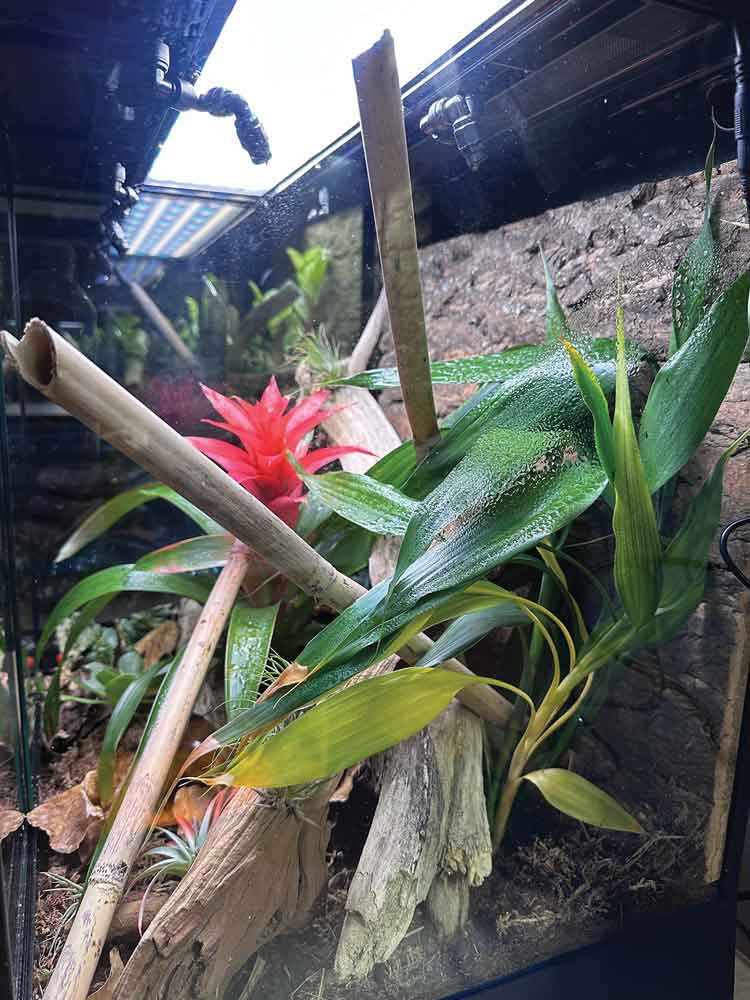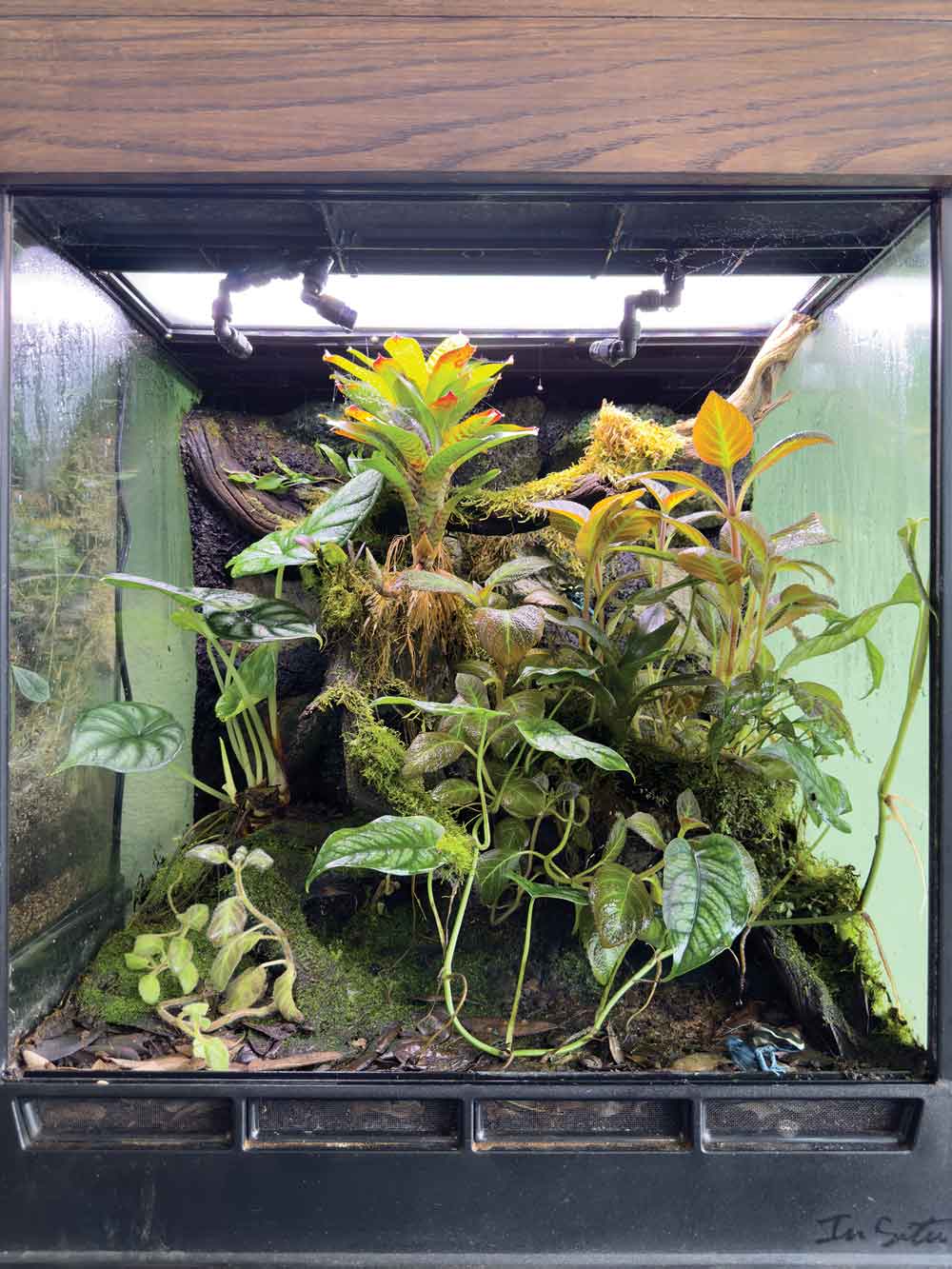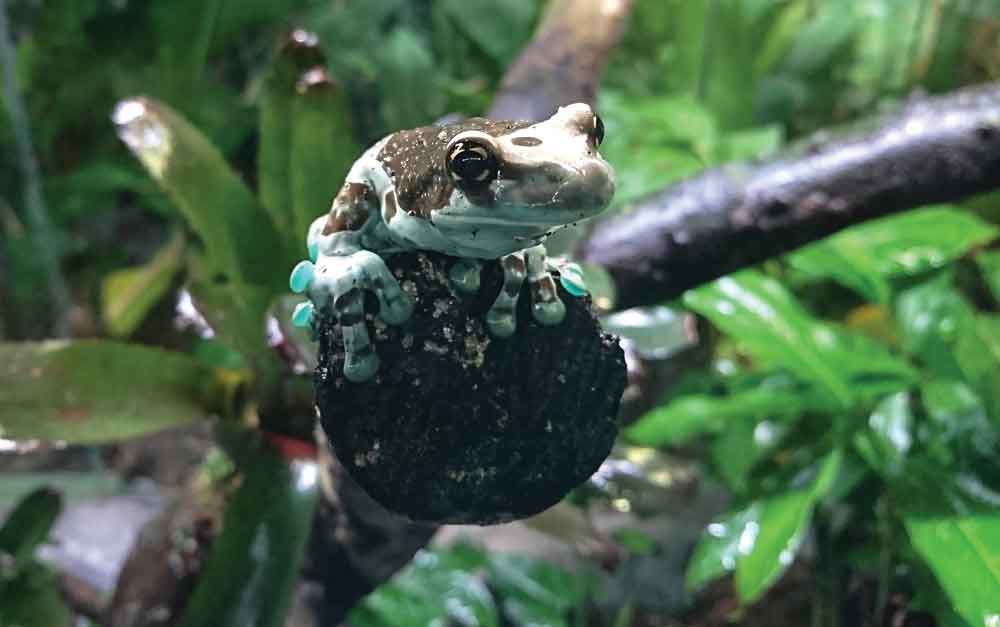Well-planted vivaria are becoming increasingly popular among reptile and amphibian enthusiasts.
Well-planted vivaria are becoming increasingly popular among reptile and amphibian enthusiasts. You don’t need a green thumb to maintain a beautiful, thriving vivarium. Starting out can feel overwhelming given the variety of plants available and the many stunning options you’ll find at shows. Here are some reliable and safe starter plants for your vivarium. Anyone can use them to create the ideal planted habitat.

1. Pothos Ivy (Epipremnum aureum)
One of the most popular choices for vivarium setups, pothos is often described as ‘practically bulletproof.’ This versatile vine tolerates a variety of light conditions and helps maintain humidity in an enclosure. Its trailing vines provide natural climbing opportunities for small reptiles or amphibians while requiring minimal maintenance. Popular cultivars of this hardy plant include ‘Marble Queen,’ ‘Neon,’ and ‘Tys,’ which can add color and interest to your vivarium. Pothos grows rapidly and can be easily propagated from cuttings.
2. Boston Fern (Nephrolepis exaltata)
According to many terrarium experts, Boston ferns are excellent for maintaining a humid environment, making them ideal for various amphibians and tropical reptiles. These lush plants are non-toxic and provide ample cover for shy creatures. Additionally, these ferns contribute to visual interest and depth within the enclosure. They thrive in bright, filtered light and nutrient-rich soil, with several named cultivars available.
3. Peperomia species
Some vivarium keepers recommend various Peperomia species and cultivars for their compact size and overall adaptability. Sometimes referred to as “radiator plants” because many Peperomia species thrive in a bright and dry environment, conditions often found on a windowsill above a radiator, they are typically well-suited for use in smaller enclosures, where they can flourish with relatively little maintenance. With over a thousand species to choose from, the Peperomia genus offers a wide array of colors and shapes that create natural hiding spots for your reptile and amphibian pets.

Bbioactive enclosure. Photo by John Virata
4. Bromeliads
This stunning family of plants includes several popular species and cultivars that can add both color and functionality to your vivarium. Bromeliads create natural water collection points that some amphibians may use for breeding. Many of these plants are epiphytes that enjoy water provided through regular misting but do not require much, if any, soil. Bromeliads will propagate themselves through offsets once they are happy and healthy, and they will flower under the right conditions.
Tips for Success
Start Simple: Begin with only 2 to 3 plant species until you feel comfortable with the maintenance.
Consider Growth Patterns: Select plants that won’t rapidly outgrow your enclosure or can be easily trimmed to maintain a balanced appearance.
Match Habitat Needs: Select plants that thrive in conditions similar to what your reptile or amphibian pet requires.
Create Layers: Mix ground cover, mid-level, and climbing plants to form an engaging naturalistic habitat.
The key to creating a low-maintenance vivarium is selecting the right plants from the beginning. All the plants mentioned above possess these advantageous traits:
- Tolerance for high humidity
- Resistance to damage from animal activity.
- Minimal pruning requirements.
- Ability to thrive in terrarium conditions.
Keep in mind that, although these plants are safe for reptiles and amphibians, you should always:
- Buy from trustworthy sources that avoid harmful pesticides.
- Thoroughly clean new plants before introduction.
- Monitor your pet’s interaction with the plants.
- Promptly remove any damaged or dying plant material.
With these hardy and safe options, you can create a vibrant, low-maintenance vivarium that both you and your pets will enjoy.
For more plant tips, visit:
Expert Tips On Planting A Lush Vivarium
https://shorturl.at/cPNQz
DIY Planted Mix Recipes for Planted Vivariums
https://shorturl.at/HXXiz



